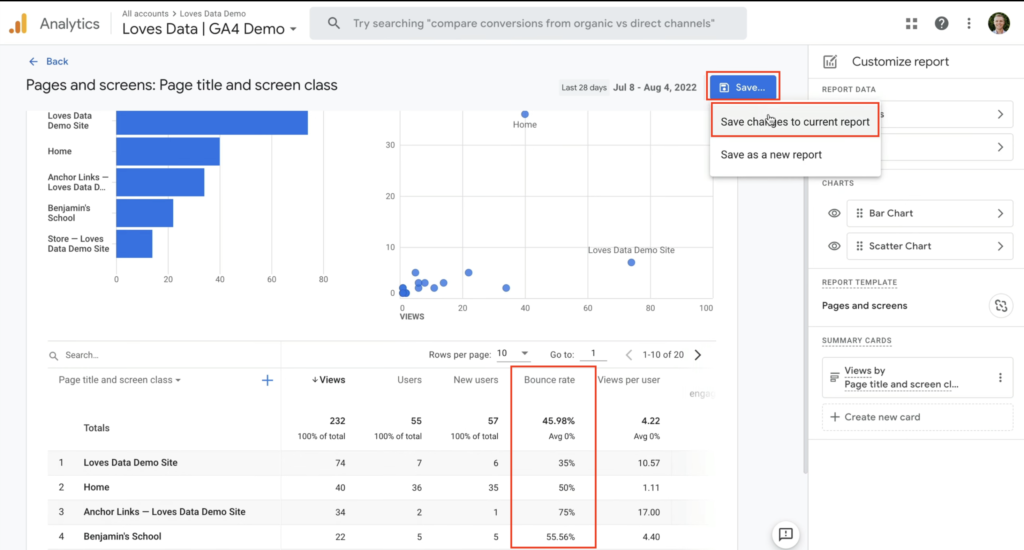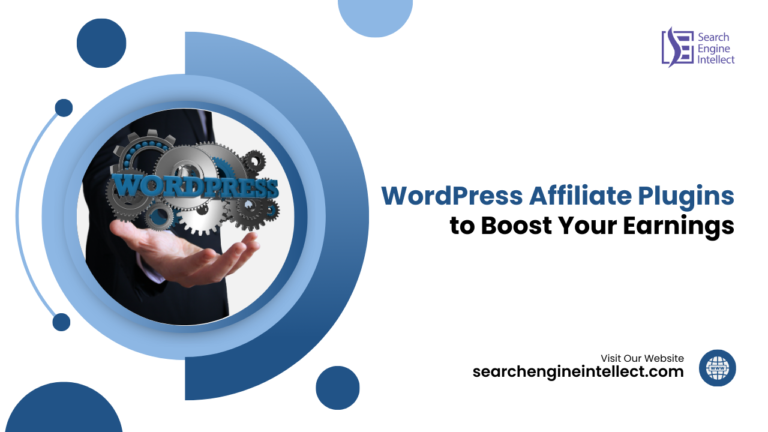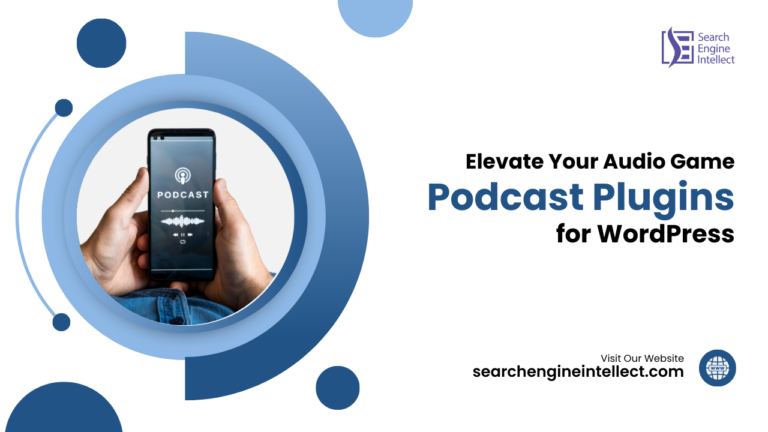Boost Your Bounce Rate: Tips and Tricks from the Experts
The bounce rate is an important measure that every website owner should regularly monitor. A high bounce rate may suggest problems with your website’s usability, content relevance, or overall performance. Understanding bounce rate, why it matters, and how to increase it will help you improve the effectiveness of your website and achieve better outcomes.
In this detailed article, we’ll delve into the subject of bounce rate, looking at expert tips and tactics to help you improve the performance of your website. From improving website load speeds to creating interesting content, we’ll go over a variety of tactics for lowering your bounce rate and keeping visitors interested.
So let’s get started and see how you can master the art of bounce rate optimization to propel your website to new heights!
Table of Contents
What is Bounce Rate?

Bounce rate is a metric that calculates the percentage of visitors who come to your website and leave without interacting with any other pages. In other words, it represents the percentage of single-page sessions on your website.
A bounce is defined by Google Analytics as a single-page session in which the user quits the site from the same page they entered without sending any more requests to the Analytics server.
For example, if 100 individuals visit your website and 30 of them leave without clicking on any additional pages, your bounce rate is 30%.
Bounce Rate Calculation
To calculate your website’s bounce rate, divide the number of bounces by the total number of visits to your website. The formula looks like this:
Bounce Rate = (Number of Bounces / Total Number of Visits) x 100
For example, if your website received 1,000 visits and 300 of those visits were bounces, your bounce rate would be:
Bounce Rate = (300 / 1,000) x 100 = 30%
It’s important to note that a high bounce rate doesn’t necessarily mean your website is performing poorly. The ideal bounce rate can vary depending on the type of website and the user’s intent.
Why Reduce the Bounce Rate?
Reducing your website’s bounce rate is crucial for several reasons:
Improved User Experience
A high bounce rate can indicate that visitors are not finding what they’re looking for on your website or are having trouble navigating it. By reducing your bounce rate, you can improve the overall user experience and keep visitors engaged.
Better Search Engine Rankings
Search engines like Google use bounce rate as a factor in determining your website’s ranking. A lower bounce rate can signal to search engines that your website provides valuable and relevant content, leading to higher rankings and more organic traffic.
Increased Conversions
Reducing your bounce rate can lead to more engaged visitors who are more likely to convert into leads or customers. By keeping visitors on your website for longer, you increase the chances of them taking desired actions like making a purchase, filling out a form, or signing up for a newsletter.
Reduced Marketing Costs
A lower bounce rate means your marketing efforts are more effective. You’ll get more value out of your advertising spend and content creation efforts when visitors engage with your website and take desired actions.
What is a Good Bounce Rate?
There is no one-size-fits-all answer to what constitutes a “good” bounce rate. The ideal bounce rate can vary depending on several factors, including:
- Industry: Different industries tend to have varying bounce rates. For example, e-commerce websites often have lower bounce rates compared to blogs or informational websites.
- Device: Bounce rates can differ between desktop and mobile visitors. Mobile users tend to have higher bounce rates due to factors like smaller screens and slower internet speeds.
- Traffic Source: The source of your website traffic can impact bounce rates. Visitors from social media or email campaigns may have lower bounce rates compared to those from search engines or direct traffic.
- Page Type: The type of page a visitor lands on can affect bounce rate. For example, a product page may have a lower bounce rate than a blog post.
As a general guideline, a bounce rate between 26-40% is considered average, while a rate above 70% is considered high. However, it’s essential to compare your website’s bounce rate to industry benchmarks and set goals based on your specific business objectives.

How to Check Bounce Rate in GA4?
To check your website’s bounce rate in Google Analytics 4 (GA4), follow these steps:
- Log in to your GA4 property.
- Navigate to the “Reports” section.
- Click on “Engagement” in the left-hand menu.
- Select “Engagement overview” from the list of reports.
- Look for the “Bounce rate” metric under the “Engagement” section.
Alternatively, you can create a custom report in GA4 to track your bounce rate more closely. Here’s how:
- Click on “Configure” in the left-hand menu.
- Select “Explorations” from the list of options.
- Choose “Blank” as the template.
- Add the “Bounce rate” metric to your report.
- Apply any additional filters or dimensions to customize your report.
By regularly monitoring your bounce rate in GA4, you can identify trends, compare performance across different time periods, and track the impact of your optimization efforts.
Factors Influencing Bounce Rates
Several factors can influence your website’s bounce rate. Understanding these factors can help you identify areas for improvement and develop targeted strategies to reduce your bounce rate.
- Page Load Speed: Slow page load times can significantly increase your bounce rate. Users expect websites to load quickly, and if a page takes too long to load, they’re more likely to leave.
- Mobile Optimization: With more and more users accessing websites from mobile devices, it’s crucial to ensure your website is mobile-friendly. If your website doesn’t provide a good user experience on mobile, you’re likely to see higher bounce rates.
- Content Quality: The quality and relevance of your website’s content play a significant role in keeping visitors engaged. If your content doesn’t meet the user’s expectations or provide value, they’re more likely to bounce.
- Navigation: A confusing or difficult-to-use navigation menu can make it hard for visitors to find what they’re looking for, leading to higher bounce rates. Ensure your navigation is clear, intuitive, and consistent across your website.
- Ads and Popups: While ads and popups can be useful for generating leads or revenue, they can also be disruptive to the user experience. If used excessively or in a way that interferes with the content, they can contribute to higher bounce rates.
- Broken Links and Errors: Broken links, 404 errors, and other technical issues can frustrate visitors and cause them to leave your website. Regularly check for and fix any broken links or errors to maintain a smooth user experience.
- Lack of Calls-to-Action: Without clear calls-to-action (CTAs), visitors may not know what to do next on your website. Ensure your website has prominent CTAs that encourage visitors to engage further, such as signing up for a newsletter, making a purchase, or contacting you.
- Irrelevant Traffic: If your website is attracting visitors who are not interested in your products or services, you’re likely to see higher bounce rates. Ensure your marketing efforts are targeting the right audience and that your website content is relevant to their needs.
By addressing these factors and optimizing your website accordingly, you can significantly reduce your bounce rate and improve overall user engagement.
Also read: Maximize Your Credibility with the Best Testimonial Plugins for WordPress
Tips to Improve Your Bounce Rate
Now that we’ve covered the basics of bounce rate and the factors that influence it, let’s dive into some expert tips and tricks to help you boost your website’s performance:
Optimize Page Load Speed
- Compress and optimize images and other media files
- Minimize the use of large, uncompressed files
- Enable browser caching to reduce server requests
- Use a content delivery network (CDN) to serve static assets
- Minimize the use of redirects and external scripts
Improve Mobile Optimization
- Ensure your website is responsive and adapts to different screen sizes
- Use large, easy-to-click buttons and links for mobile users
- Avoid using intrusive popups or ads that cover the entire screen
- Test your website on various mobile devices and browsers
Create Engaging and Relevant Content
- Conduct keyword research to understand your target audience’s search intent
- Produce high-quality, informative content that addresses your audience’s pain points
- Use headings, subheadings, and bullet points to make your content scannable
- Include visuals, such as images and videos, to break up text and keep readers engaged
- Regularly update your content to maintain relevance and freshness
Optimize Your Website Navigation
- Use a clear and intuitive navigation menu that is consistent across your website
- Group related pages together and use descriptive labels for each category
- Ensure your navigation is easy to access and visible on every page
- Consider adding a search bar to help visitors find what they’re looking for quickly
Use Targeted Ads and Popups
- Limit the use of intrusive ads and popups that disrupt the user experience
- Target your ads and popups to specific pages or user segments to increase relevance
- Use exit-intent popups to capture visitors who are about to leave your website
- Ensure your ads and popups are visually appealing and don’t slow down your website
Fix Broken Links and Errors
- Regularly check for and fix broken links, 404 errors, and other technical issues
- Use tools like Google Search Console to identify and address crawl errors
- Implement custom 404 pages that provide helpful information and navigation options
- Monitor your website’s performance and address any issues promptly
Add Clear Calls-to-Action
- Use prominent, eye-catching CTAs that stand out on your website
- Ensure your CTAs are relevant to the page content and user intent
- Test different CTA placements, colors, and wording to optimize for conversions
- Consider using urgency or scarcity to encourage visitors to take action
Target the Right Audience
- Conduct market research to understand your target audience’s demographics, interests, and pain points
- Use targeted advertising and content strategies to attract visitors who are likely to engage with your website
- Monitor your website analytics to identify high-performing traffic sources and optimize your marketing efforts accordingly
- Consider implementing user segmentation and personalization to provide a more tailored experience for different visitor groups
Encourage Visitor Engagement
- Add social sharing buttons to your website to make it easy for visitors to share your content
- Implement a comments section or forum to encourage visitors to engage with your content and each other
- Use interactive elements, such as quizzes or calculators, to keep visitors engaged and interested
- Offer lead magnets, such as ebooks or webinars, in exchange for visitor contact information to build your email list
Continuously Test and Optimize
- Use A/B testing to compare different versions of your website and identify the most effective elements
- Regularly analyze your website analytics to identify areas for improvement and track the impact of your optimization efforts
- Stay up-to-date with the latest trends and best practices in website optimization and user experience
- Be willing to experiment and try new strategies to continuously improve your website’s performance
By implementing these tips and tricks, you can significantly reduce your website’s bounce rate and keep visitors engaged and interested in your content. Remember, improving your bounce rate is an ongoing process that requires continuous testing, optimization, and adaptation to the changing needs and preferences of your target audience.
Conclusion
Bounce rate is a critical metric that every website owner should monitor and optimize. By understanding what bounce rate is, why it matters, and how to improve it, you can enhance your website’s effectiveness and drive better results.
In this guide, we’ve covered the key factors that influence bounce rates, including page load speed, mobile optimization, content quality, navigation, ads and popups, broken links and errors, calls-to-action, and targeted traffic.
We’ve also provided a comprehensive list of expert tips and tricks to help you boost your website’s performance, including optimizing page load speed, improving mobile optimization, creating engaging and relevant content, optimizing website navigation, using targeted ads and popups, fixing broken links and errors, adding clear calls-to-action, targeting the right audience, encouraging visitor engagement, and continuously testing and optimizing.
By implementing these strategies and continuously monitoring and adapting your approach, you can significantly reduce your website’s bounce rate and keep visitors engaged and interested in your content. Remember, improving your bounce rate is an ongoing process that requires dedication, creativity, and a deep understanding of your target audience.So, what are you waiting for?
Start implementing these tips and tricks today and watch your website’s bounce rate soar to new heights!









